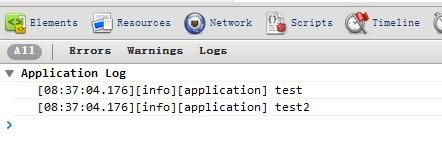- MySQL的主从和分库分表
snow_7
MySQL
主从分离:多读少些的场景MySQL1)主从复制使用的是binlog异步的方式MySQL的主从复制是依赖于binlog的,也就是记录MySQL上的所有变化并以二进制形式保存在磁盘上二进制日志文件。主从复制就是将binlog中的数据从主库传输到从库上,一般这个过程是异步的,即主库上的操作不会等待binlog同步的完成。主从复制的过程是这样的:首先从库在连接到主节点时会创建一个IO线程,用以请求主库更新
- Springboot整合Elasticsearch及常用方法大全
水木石画室
springbootelasticsearchjenkins
SpringBoot整合Elasticsearch是企业级开发中常见的需求,用于实现高效的全文检索、日志分析等功能。以下是整合的核心步骤和常用方法大全,涵盖从基础配置到高级操作的完整流程。一、环境准备与依赖配置1.环境要求Elasticsearch:需先安装并启动(建议7.10+或8.x版本,与SpringDataElasticsearch兼容)。SpringBoot:推荐2.7.x或3.x版本(
- 大数据ETL工具比较:Sqoop vs Flume vs Kafka
AI天才研究院
AI人工智能与大数据大数据etlsqoopai
大数据ETL工具比较:SqoopvsFlumevsKafka关键词:大数据ETL、Sqoop、Flume、Kafka、数据迁移、日志采集、消息队列摘要:在大数据生态中,ETL(抽取-转换-加载)是数据价值挖掘的关键环节。不同业务场景对数据传输的实时性、可靠性、数据类型有差异化需求,催生了Sqoop、Flume、Kafka等特色鲜明的ETL工具。本文从核心架构、工作原理、性能指标、实战案例四个维度,
- iOS 接口频繁请求导致流量激增?抓包分析定位与修复全流程
2501_91600747
httpudphttpswebsocket网络安全网络协议tcp/ip
在一次版本更新后,我们的后端监控发现iOS端某接口QPS突然飙升数倍,甚至超过安卓端。没有异常崩溃、也没有大规模新增用户,唯一现象是服务端同一用户会在一分钟内多次重复请求该接口。这是最难排查的异常:既不像崩溃能看到日志堆栈,也没有用户主观反馈问题,只有冷冰冰的接口流量激增数据。我们依靠抓包和流量复现,完整地还原了问题触发链。背景:接口QPS大幅提升,无用户感知问题接口为首页刷新数据接口,按逻辑只需
- MySQL 的日志分析
jarenyVO
Mysql数据库
MySQL的日志分析MySQL的日志系统是保证数据一致性、持久性和高可用的核心组件,不同日志各司其职。以下是详细分类和解析:一、事务日志(InnoDB引擎层)1.RedoLog(重做日志)物理格式:循环写入的固定大小文件(默认ib_logfile0、ib_logfile1)核心作用:崩溃恢复:确保事务的持久性(Durability)Write-AheadLogging(WAL):数据页修改前先写r
- 非结构化文档的自动化敏感标识方法技术解析
KKKlucifer
自动化运维
在数字化时代,企业与组织面临的数据形态正发生深刻变革。据统计,非结构化数据占企业数据总量的80%以上,涵盖文本、邮件、PDF、日志、社交媒体内容等多种形式。这些数据中往往蕴含着大量敏感信息,如个人身份信息、商业机密、医疗记录等,一旦泄露将造成严重的安全风险。然而,非结构化文档缺乏统一的数据模型和格式规范,传统基于结构化数据的敏感信息识别方法难以直接应用,面临着三大核心挑战:语义理解复杂性:自然语言
- docker安装nginx并配置ssl证书,代理宿主机服务
Blueeyedboy521
开发工具nginxssldocker
目录1、拉取镜像2、创建映射目录3、先启动一个nginx容器用于cp对应的文件夹类型,用于后期挂载使用4、映射容器文件5、停止当前nginx容器,并删除7、拷贝ssl证书8、配置nginx.conf9、运行10、进入容器11、查看日志12、代理宿主机服务查看宿主机在docker中的ip配置docker上安装的nginx1、拉取镜像dockerpullnginx2、创建映射目录#首先,创建目录ngi
- 鸿蒙仓颉语言开发实战教程:购物车页面
合集-仓颉教程(31)1.详解鸿蒙仓颉开发语言中的日志打印问题05-212.鸿蒙仓颉开发语言实战教程:实现商城应用首页05-223.鸿蒙仓颉开发语言实战教程:页面跳转和传参05-254.鸿蒙仓颉语言开发教程:页面和组件的生命周期05-285.鸿蒙仓颉语言开发实战教程:购物车页面06-036.鸿蒙仓颉语言开发实战教程:商城登录页06-047.鸿蒙仓颉语言开发实战教程:商城搜索页06-058.鸿蒙仓颉
- C#.NET 中间件详解
c#.net
简介中间件(Middleware)是ASP.NETCore的核心组件,用于处理HTTP请求和响应的管道机制。它是基于管道模型的轻量级、模块化设计,允许开发者在请求处理过程中插入自定义逻辑。中间件广泛应用于日志记录、认证授权、异常处理、路由等场景。定义:中间件是处理HTTP请求和响应的组件,位于服务器接收到请求到最终返回响应之间的“管道”中。作用:可用于身份认证、授权、日志、静态文件、异常处理、CO
- Java:动态代理Proxy
十秒耿直拆包选手
JavaProgrammingupjava
动态代理在Java中有着广泛的应用,比如SpringAOP、Hibernate数据查询、测试框架的后端mock、RPC远程调用、Java注解对象获取、日志、用户鉴权、全局性异常处理、性能监控,甚至事务处理等。基本概念假设有一个表示接口的Class对象(有可能只包含一个接口),它的确切类型在编译时无法知道。要想构造一个实现这些接口的类,就需要使用newInstance方法或反射找出这个类的构造器。但
- Entering emergency mode. Exit the shell to continue“journalctl‘to view system logs。【比较全的解决办法】
1.进入紧急模式并查看日志输入root密码在紧急模式提示符下,输入root用户的密码以获得访问权限(如果root密码已知)。查看系统日志运行以下命令查看启动日志,定位具体错误原因:journalctl-xb按↑/↓键滚动日志,或使用Ctrl+C退出。关注以下关键错误信息:Failedtomount/sysroot:根文件系统挂载失败。XFS(dm-0)::文件系统错误(如XFS损坏)。dracut
- mariadb冷备操作流程
运维小杨
mariadb数据库
1、配置清单10.0.0.23客户端一台,10.0.0.13服务端一台,需要将客户端的数据备份到服务端2、客户端配置2.1开启二进制日志vim/etc/mysql/mariadb.conf.d/50-server.cnf2.2在[mysql]下面添加log_bin=/data/mysql/logs/binlog2.3创建日志目录,给予权限mkdir/data/mysql/logs/-pchownm
- 学习日志02 ETF 基础数据可视化分析与简易管理系统
im_AMBER
学习数据分析
从头开始了,现在有数据的变动还有要用jupyter,这个文学编程的确很好,虽然我们老师有点push有点严格,但觉得好好学确实能收获不少知识的!!!是的!已经搭建了miniconda关联的jupyternotebook1我发现jupyter是不可以关闭conda终端运行的对哒,JupyterNotebook是依赖终端(或AnacondaPrompt)启动的本地服务,终端窗口不能直接关闭,否则Jupy
- HarmonyOS NEXT仓颉开发语言实现画板案例
营养师老鲜
harmonyos开发语言华为
合集-仓颉教程(29)1.详解鸿蒙仓颉开发语言中的日志打印问题05-212.鸿蒙仓颉开发语言实战教程:实现商城应用首页05-223.鸿蒙仓颉开发语言实战教程:页面跳转和传参05-254.鸿蒙仓颉语言开发教程:页面和组件的生命周期05-285.鸿蒙仓颉语言开发实战教程:购物车页面06-036.鸿蒙仓颉语言开发实战教程:商城登录页06-047.鸿蒙仓颉语言开发实战教程:商城搜索页06-058.鸿蒙仓颉
- 鸿蒙Next仓颉语言开发实战教程:店铺详情页
杨凌晨
harmonyos华为
合集-仓颉教程(27)1.详解鸿蒙仓颉开发语言中的日志打印问题05-212.鸿蒙仓颉开发语言实战教程:实现商城应用首页05-223.鸿蒙仓颉开发语言实战教程:页面跳转和传参05-254.鸿蒙仓颉语言开发教程:页面和组件的生命周期05-285.鸿蒙仓颉语言开发实战教程:购物车页面06-036.鸿蒙仓颉语言开发实战教程:商城登录页06-047.鸿蒙仓颉语言开发实战教程:商城搜索页06-058.鸿蒙仓颉
- HarmonyOS NEXT仓颉开发语言实战案例:动态广场
SSA丝社APP
harmonyos开发语言华为
合集-仓颉教程(29)1.详解鸿蒙仓颉开发语言中的日志打印问题05-212.鸿蒙仓颉开发语言实战教程:实现商城应用首页05-223.鸿蒙仓颉开发语言实战教程:页面跳转和传参05-254.鸿蒙仓颉语言开发教程:页面和组件的生命周期05-285.鸿蒙仓颉语言开发实战教程:购物车页面06-036.鸿蒙仓颉语言开发实战教程:商城登录页06-047.鸿蒙仓颉语言开发实战教程:商城搜索页06-058.鸿蒙仓颉
- 宝塔+fastadmin:给项目添加定时任务+log日志自定义添加
25号底片~
php后端配置(宝塔)php
一、定时任务脚本编写1.使用shebang声明执行器#!/usr/bin/envphp这是Unix/Linux系统中脚本文件的标准开头。表示这个脚本使用系统环境变量中的php来执行。2.定义ThinkPHP入口路径并加载框架define('APP_PATH',__DIR__.'/../../application/');require__DIR__.'/../../thinkphp/start.p
- Vue中的v-if与emit事件传递:一个常见陷阱分析
发现你走远了
vue.jsjavascript前端
Vue中的v-if与事件传递:一个常见陷阱分析在Vue开发中,v-if与事件传递的组合可能会导致一些难以排查的问题。本文将分析一个典型案例,并提供解决方案。问题描述在一个登录流程中,我们有三个组件嵌套:InviteCodeDialog(邀请码验证组件)PcLogin(登录组件,包含InviteCodeDialog)PcLoginView(页面组件,包含PcLogin)每个组件都有自己的日志输出:/
- 从用户日志到智能宏:我的BFS寻宝奇遇记(2014. 重复 K 次的最长子序列)
满分观察网友z
算法解构与应用算法
从用户日志到智能宏:我的BFS寻宝奇遇记大家好,我是一个在代码世界里摸爬滚打了N年的老兵。今天想和大家聊聊最近在项目中遇到的一个棘手问题,以及我是如何用一个看似“学院派”的算法——广度优先搜索(BFS)——漂亮地解决它的。这趟旅程有“踩坑”的窘迫,也有“恍然大悟”的喜悦,希望能给同在路上的你带来一些启发。一、我遇到了什么问题?一个“善解人意”的功能我所在的团队正在开发一款面向设计师的创意软件。为了
- 使用Git版本控制查看文件更改历史
1010n111
git
使用Git版本控制查看文件更改历史技术背景在软件开发和项目管理中,版本控制是一项至关重要的技术。Git作为目前最流行的分布式版本控制系统,提供了强大的文件更改历史查看功能。通过查看文件的更改历史,开发者可以了解文件的演变过程,追踪问题的根源,以及与团队成员进行有效的协作。实现步骤生成每个日志条目的补丁使用以下命令让Git为每个日志条目生成补丁:gitlog-p--其中,-p选项用于生成补丁文本。获
- 建议是先把base完全搞懂
weixin_47868976
Web云存储项目网络
并发编程日志系统啥的我只了解了一点点直接从网络层入手这个项目可行么?底层base模块没搞懂从web开始合理么?你的担心很有道理!让我来分析一下学习路径的可行性,并给你一个合理的学习建议。一、项目依赖关系分析1.模块依赖层次application/(应用层)↓强依赖net/(网络层)↓强依赖base/(基础层)↓强依赖系统调用(LinuxAPI)2.具体依赖关系Rantool从依赖分析可以看出,网络
- 同步日志系统深度解析【链式调用】【宏定义】【固定缓冲区】【线程局部存储】【RAII】
weixin_47868976
链表python
你的理解完全正确!让我结合你的项目,深入讲解同步日志的实现原理和代码。同步日志系统深度解析开始之前:没有必要一行一行理解!没有必要一行一行理解!我建议你采用更高效的学习策略:一、学习策略建议重点理解核心概念和设计思路//只需要理解这些核心概念:1.RAII模式:构造函数获取资源,析构函数释放资源2.链式调用:operatorstream()output();//手动调用输出deletelogger
- 心跳报文 - Linux C++网络编程(二十八)
生活需要深度
linux内核网络编程
一:前面学习的总结核心架构浓缩总结实现的功能:(1)服务器按照包头包体格式正确的接收客户端发送过来的数据包;(2)根据手动的包的不同来执行不同的业务处理逻辑;(3)把业务处理产生的结果数据包返回客户端;咱们用到的主要技术(1)epoll高并发通讯技术(2)线程池技术来处理业务逻辑(3)线程之间的同步技术包括互斥量、信号量其他技术:信号,日志打印,fork()子进程,守护进程借鉴了哪些官方nginx
- MyBatis实战指南(八)MyBatis日志
珹洺
#MyBatis实战指南mybatistomcatjava
MyBatis实战指南(八)MyBatis日志前言一、为什么需要日志?二、日志框架怎么选?1.手把手教你集成(以最常用的SLF4J+Logback为例)步骤1:添加依赖(Maven项目)步骤2:在MyBatis配置文件中开启日志步骤3:配置Logback日志文件三、配置方式详解1.MyBatis自身的日志配置2.日志级别控制3.SpringBoot中怎么配?四、源码解析:搞懂MyBatis日志底层
- 鸿蒙应用开发 自定义组件属性访问限定符
yj235532
鸿蒙harmonyos鸿蒙开发移动开发harmonyos鸿蒙鸿蒙开发UI组件化
在鸿蒙Next开发中,ArkTS对自定义组件的成员变量使用的访问限定符private/public/protected有特定的校验规则,当不按规范使用时会产生相应的日志信息。一、使用限制概述(一)private修饰相关限制1.对于@State/@Prop/@Provide/@BuilderParam/常规成员变量(不涉及更新的普通变量),使用private修饰时,在自定义组件构造时不允许进行赋值传
- 假如你从现在开始学习软件测试,需要多久才能学会呢?
AIZHINAN
学习
首先,不要去网上找那些零零碎碎的教程,很难学懂!你可以根据这个学习大纲定计划只要3-6个月就可以掌握软件测试,升职涨薪不在话下:1.基础阶段:先搞懂测试理论、用例设计,会用Jira写Bug;2.中级阶段:学SQL查数据、Linux看日志,Postman测接口,再用Selenium玩自动化;3.进阶阶段:搭Pytest框架、用JMeter压测,安全测试搞BurpSuite;4.扩展技能:Python
- Zeek网络安全分析框架深入体验
八位数花园
本文还有配套的精品资源,点击获取简介:Zeek(前身为Bro)是一个强大的开源网络分析工具,专门用于监控和分析网络流量以识别安全威胁。它通过事件驱动的方式解析多种网络协议,并具备实时分析、非侵入式部署、强大的日志记录能力,以及丰富的脚本语言支持,是网络安全专业人员不可或缺的工具之一。通过本课程,学生将掌握Zeek的核心功能,包括其日志系统、事件处理机制,以及如何通过编写Zeek脚本来扩展分析能力,
- iOS 抓包实战:时间戳偏差导致的数据同步异常排查记录
00后程序员张
httpudphttpswebsocket网络安全网络协议tcp/ip
“这条数据不是我填的”“我的更新被覆盖了”“两个设备显示不一致”——这些是产品上线后最令人头疼的反馈。最近我们在一次用户同步问题排查中,发现表面是“数据丢失”问题,实则是多端数据提交时间戳处理不一致,导致后台认为老数据为新,覆盖了正确内容。这类问题通常日志无法直接反映,需要从网络请求行为层级来全面还原。本文是一次跨平台同步数据错乱排查的抓包实录,目标是展示如何用多工具组合方式,精确还原并定位导致数
- 网安知识“大乱炖“
Lovely_18
网安知识积累
网安知识"大乱炖"Windows安全事件日志常用EventID:EventID含义说明4624登录成功表示用户成功登录系统4625登录失败✅表示登录尝试失败,是暴力破解最关键的日志标志4672特权登录表示具有管理员权限的账户登录(用于检测高权限账户活动)4648显式凭证登录用户在使用runas或远程方式提供用户名/密码登录暴力破解相关日志特征:连续触发大量4625登录失败来自同一个IP或多个IP的
- Go 语言单例模式全解析:从青铜到王者段位的实现方案
后端
什么是单例模式?单例模式(SingletonPattern)是一种创建型设计模式,它确保一个类(或结构体,在Go语言中)只有一个实例,并提供一个全局访问点来访问这个实例。这个模式在需要协调系统中动作的场景下非常有用,例如日志记录、配置管理或数据库连接池。为什么在Go中需要单例模式?Go语言以其简洁和高效的并发能力而闻名,支持goroutine和通道(channel)来实现并发编程。在并发环境中,确
- 关于旗正规则引擎下载页面需要弹窗保存到本地目录的问题
何必如此
jsp超链接文件下载窗口
生成下载页面是需要选择“录入提交页面”,生成之后默认的下载页面<a>标签超链接为:<a href="<%=root_stimage%>stimage/image.jsp?filename=<%=strfile234%>&attachname=<%=java.net.URLEncoder.encode(file234filesourc
- 【Spark九十八】Standalone Cluster Mode下的资源调度源代码分析
bit1129
cluster
在分析源代码之前,首先对Standalone Cluster Mode的资源调度有一个基本的认识:
首先,运行一个Application需要Driver进程和一组Executor进程。在Standalone Cluster Mode下,Driver和Executor都是在Master的监护下给Worker发消息创建(Driver进程和Executor进程都需要分配内存和CPU,这就需要Maste
- linux上独立安装部署spark
daizj
linux安装spark1.4部署
下面讲一下linux上安装spark,以 Standalone Mode 安装
1)首先安装JDK
下载JDK:jdk-7u79-linux-x64.tar.gz ,版本是1.7以上都行,解压 tar -zxvf jdk-7u79-linux-x64.tar.gz
然后配置 ~/.bashrc&nb
- Java 字节码之解析一
周凡杨
java字节码javap
一: Java 字节代码的组织形式
类文件 {
OxCAFEBABE ,小版本号,大版本号,常量池大小,常量池数组,访问控制标记,当前类信息,父类信息,实现的接口个数,实现的接口信息数组,域个数,域信息数组,方法个数,方法信息数组,属性个数,属性信息数组
}
&nbs
- java各种小工具代码
g21121
java
1.数组转换成List
import java.util.Arrays;
Arrays.asList(Object[] obj); 2.判断一个String型是否有值
import org.springframework.util.StringUtils;
if (StringUtils.hasText(str)) 3.判断一个List是否有值
import org.spring
- 加快FineReport报表设计的几个心得体会
老A不折腾
finereport
一、从远程服务器大批量取数进行表样设计时,最好按“列顺序”取一个“空的SQL语句”,这样可提高设计速度。否则每次设计时模板均要从远程读取数据,速度相当慢!!
二、找一个富文本编辑软件(如NOTEPAD+)编辑SQL语句,这样会很好地检查语法。有时候带参数较多检查语法复杂时,结合FineReport中生成的日志,再找一个第三方数据库访问软件(如PL/SQL)进行数据检索,可以很快定位语法错误。
- mysql linux启动与停止
墙头上一根草
如何启动/停止/重启MySQL一、启动方式1、使用 service 启动:service mysqld start2、使用 mysqld 脚本启动:/etc/inint.d/mysqld start3、使用 safe_mysqld 启动:safe_mysqld&二、停止1、使用 service 启动:service mysqld stop2、使用 mysqld 脚本启动:/etc/inin
- Spring中事务管理浅谈
aijuans
spring事务管理
Spring中事务管理浅谈
By Tony Jiang@2012-1-20 Spring中对事务的声明式管理
拿一个XML举例
[html]
view plain
copy
print
?
<?xml version="1.0" encoding="UTF-8"?>&nb
- php中隐形字符65279(utf-8的BOM头)问题
alxw4616
php中隐形字符65279(utf-8的BOM头)问题
今天遇到一个问题. php输出JSON 前端在解析时发生问题:parsererror.
调试:
1.仔细对比字符串发现字符串拼写正确.怀疑是 非打印字符的问题.
2.逐一将字符串还原为unicode编码. 发现在字符串头的位置出现了一个 65279的非打印字符.
- 调用对象是否需要传递对象(初学者一定要注意这个问题)
百合不是茶
对象的传递与调用技巧
类和对象的简单的复习,在做项目的过程中有时候不知道怎样来调用类创建的对象,简单的几个类可以看清楚,一般在项目中创建十几个类往往就不知道怎么来看
为了以后能够看清楚,现在来回顾一下类和对象的创建,对象的调用和传递(前面写过一篇)
类和对象的基础概念:
JAVA中万事万物都是类 类有字段(属性),方法,嵌套类和嵌套接
- JDK1.5 AtomicLong实例
bijian1013
javathreadjava多线程AtomicLong
JDK1.5 AtomicLong实例
类 AtomicLong
可以用原子方式更新的 long 值。有关原子变量属性的描述,请参阅 java.util.concurrent.atomic 包规范。AtomicLong 可用在应用程序中(如以原子方式增加的序列号),并且不能用于替换 Long。但是,此类确实扩展了 Number,允许那些处理基于数字类的工具和实用工具进行统一访问。
- 自定义的RPC的Java实现
bijian1013
javarpc
网上看到纯java实现的RPC,很不错。
RPC的全名Remote Process Call,即远程过程调用。使用RPC,可以像使用本地的程序一样使用远程服务器上的程序。下面是一个简单的RPC 调用实例,从中可以看到RPC如何
- 【RPC框架Hessian一】Hessian RPC Hello World
bit1129
Hello world
什么是Hessian
The Hessian binary web service protocol makes web services usable without requiring a large framework, and without learning yet another alphabet soup of protocols. Because it is a binary p
- 【Spark九十五】Spark Shell操作Spark SQL
bit1129
shell
在Spark Shell上,通过创建HiveContext可以直接进行Hive操作
1. 操作Hive中已存在的表
[hadoop@hadoop bin]$ ./spark-shell
Spark assembly has been built with Hive, including Datanucleus jars on classpath
Welcom
- F5 往header加入客户端的ip
ronin47
when HTTP_RESPONSE {if {[HTTP::is_redirect]}{ HTTP::header replace Location [string map {:port/ /} [HTTP::header value Location]]HTTP::header replace Lo
- java-61-在数组中,数字减去它右边(注意是右边)的数字得到一个数对之差. 求所有数对之差的最大值。例如在数组{2, 4, 1, 16, 7, 5,
bylijinnan
java
思路来自:
http://zhedahht.blog.163.com/blog/static/2541117420116135376632/
写了个java版的
public class GreatestLeftRightDiff {
/**
* Q61.在数组中,数字减去它右边(注意是右边)的数字得到一个数对之差。
* 求所有数对之差的最大值。例如在数组
- mongoDB 索引
开窍的石头
mongoDB索引
在这一节中我们讲讲在mongo中如何创建索引
得到当前查询的索引信息
db.user.find(_id:12).explain();
cursor: basicCoursor 指的是没有索引
&
- [硬件和系统]迎峰度夏
comsci
系统
从这几天的气温来看,今年夏天的高温天气可能会维持在一个比较长的时间内
所以,从现在开始准备渡过炎热的夏天。。。。
每间房屋要有一个落地电风扇,一个空调(空调的功率和房间的面积有密切的关系)
坐的,躺的地方要有凉垫,床上要有凉席
电脑的机箱
- 基于ThinkPHP开发的公司官网
cuiyadll
行业系统
后端基于ThinkPHP,前端基于jQuery和BootstrapCo.MZ 企业系统
轻量级企业网站管理系统
运行环境:PHP5.3+, MySQL5.0
系统预览
系统下载:http://www.tecmz.com
预览地址:http://co.tecmz.com
各种设备自适应
响应式的网站设计能够对用户产生友好度,并且对于
- Transaction and redelivery in JMS (JMS的事务和失败消息重发机制)
darrenzhu
jms事务承认MQacknowledge
JMS Message Delivery Reliability and Acknowledgement Patterns
http://wso2.com/library/articles/2013/01/jms-message-delivery-reliability-acknowledgement-patterns/
Transaction and redelivery in
- Centos添加硬盘完全教程
dcj3sjt126com
linuxcentoshardware
Linux的硬盘识别:
sda 表示第1块SCSI硬盘
hda 表示第1块IDE硬盘
scd0 表示第1个USB光驱
一般使用“fdisk -l”命
- yii2 restful web服务路由
dcj3sjt126com
PHPyii2
路由
随着资源和控制器类准备,您可以使用URL如 http://localhost/index.php?r=user/create访问资源,类似于你可以用正常的Web应用程序做法。
在实践中,你通常要用美观的URL并采取有优势的HTTP动词。 例如,请求POST /users意味着访问user/create动作。 这可以很容易地通过配置urlManager应用程序组件来完成 如下所示
- MongoDB查询(4)——游标和分页[八]
eksliang
mongodbMongoDB游标MongoDB深分页
转载请出自出处:http://eksliang.iteye.com/blog/2177567 一、游标
数据库使用游标返回find的执行结果。客户端对游标的实现通常能够对最终结果进行有效控制,从shell中定义一个游标非常简单,就是将查询结果分配给一个变量(用var声明的变量就是局部变量),便创建了一个游标,如下所示:
> var
- Activity的四种启动模式和onNewIntent()
gundumw100
android
Android中Activity启动模式详解
在Android中每个界面都是一个Activity,切换界面操作其实是多个不同Activity之间的实例化操作。在Android中Activity的启动模式决定了Activity的启动运行方式。
Android总Activity的启动模式分为四种:
Activity启动模式设置:
<acti
- 攻城狮送女友的CSS3生日蛋糕
ini
htmlWebhtml5csscss3
在线预览:http://keleyi.com/keleyi/phtml/html5/29.htm
代码如下:
<!DOCTYPE html>
<html>
<head>
<meta charset="UTF-8">
<title>攻城狮送女友的CSS3生日蛋糕-柯乐义<
- 读源码学Servlet(1)GenericServlet 源码分析
jzinfo
tomcatWebservlet网络应用网络协议
Servlet API的核心就是javax.servlet.Servlet接口,所有的Servlet 类(抽象的或者自己写的)都必须实现这个接口。在Servlet接口中定义了5个方法,其中有3个方法是由Servlet 容器在Servlet的生命周期的不同阶段来调用的特定方法。
先看javax.servlet.servlet接口源码:
package
- JAVA进阶:VO(DTO)与PO(DAO)之间的转换
snoopy7713
javaVOHibernatepo
PO即 Persistence Object VO即 Value Object
VO和PO的主要区别在于: VO是独立的Java Object。 PO是由Hibernate纳入其实体容器(Entity Map)的对象,它代表了与数据库中某条记录对应的Hibernate实体,PO的变化在事务提交时将反应到实际数据库中。
实际上,这个VO被用作Data Transfer
- mongodb group by date 聚合查询日期 统计每天数据(信息量)
qiaolevip
每天进步一点点学习永无止境mongodb纵观千象
/* 1 */
{
"_id" : ObjectId("557ac1e2153c43c320393d9d"),
"msgType" : "text",
"sendTime" : ISODate("2015-06-12T11:26:26.000Z")
- java之18天 常用的类(一)
Luob.
MathDateSystemRuntimeRundom
System类
import java.util.Properties;
/**
* System:
* out:标准输出,默认是控制台
* in:标准输入,默认是键盘
*
* 描述系统的一些信息
* 获取系统的属性信息:Properties getProperties();
*
*
*
*/
public class Sy
- maven
wuai
maven
1、安装maven:解压缩、添加M2_HOME、添加环境变量path
2、创建maven_home文件夹,创建项目mvn_ch01,在其下面建立src、pom.xml,在src下面简历main、test、main下面建立java文件夹
3、编写类,在java文件夹下面依照类的包逐层创建文件夹,将此类放入最后一级文件夹
4、进入mvn_ch01
4.1、mvn compile ,执行后会在
